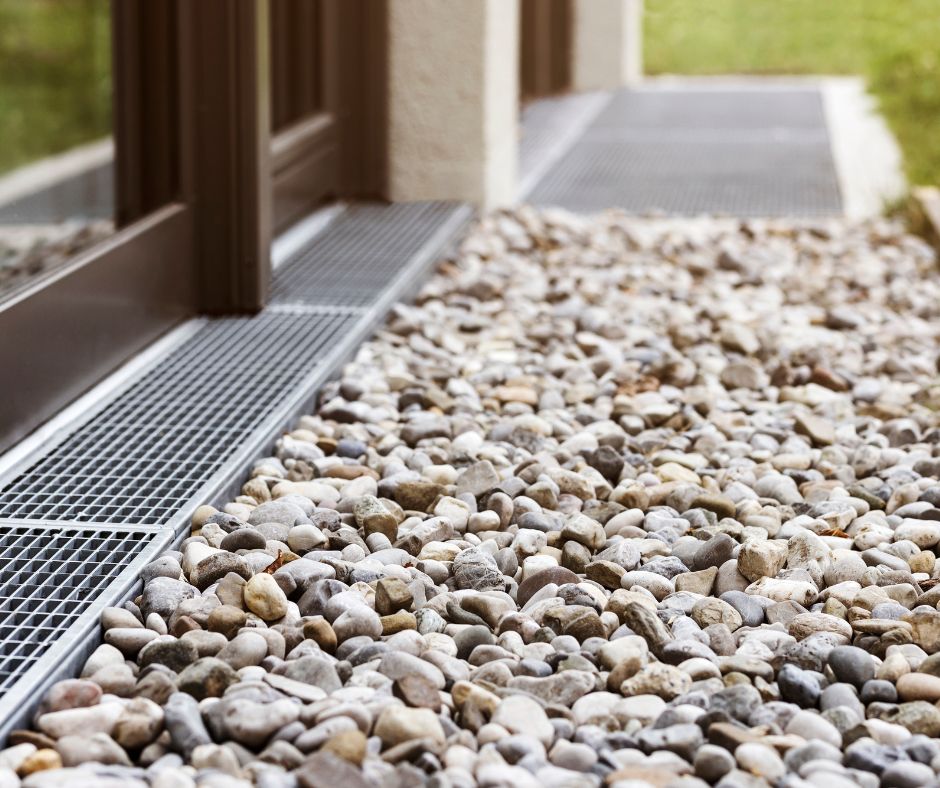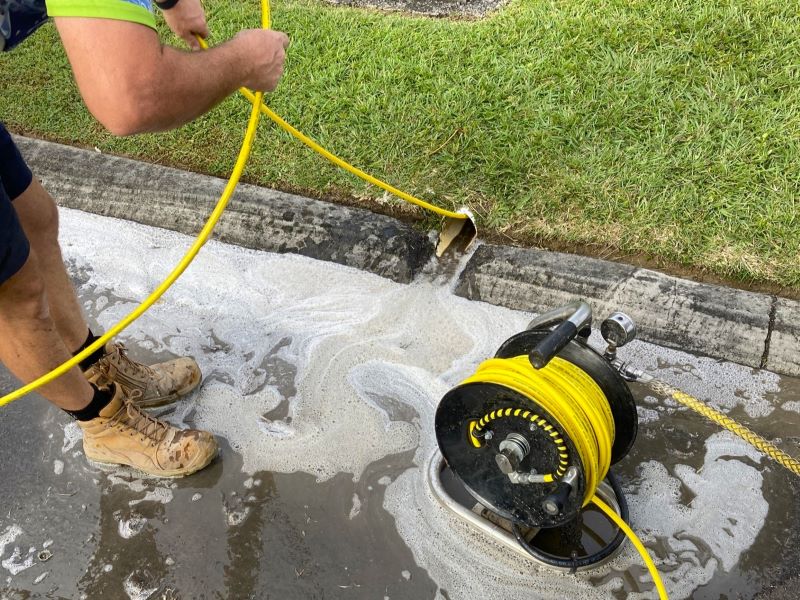Stormwater drainage systems are a vital component of infrastructure that includes various elements such as roof plumbing drainage, French drains, spoon drains, and strip drains. These systems play a crucial role in effectively managing stormwater runoff while safeguarding your property from water damage. Regular maintenance is essential—not merely a suggestion—to avert significant issues like drain blockages and flooding risks. If you find yourself dealing with problems such as clogged grates, intrusive roots affecting your pipes, or aging plumbing systems, establishing a proactive maintenance routine can significantly mitigate future complications and prevent costly repairs. Gaining a thorough understanding of how to maintain these systems is vital for protecting your home and extending its lifespan.
This comprehensive guide delves into best practices for maintaining your drainage systems and offers actionable steps to follow if you encounter blockages or other issues.

Proven Maintenance Techniques for Traditional Stormwater Drain Systems
Traditional stormwater drains are essential features for most properties, meticulously designed to channel rainwater away from structures and significantly reduce the risk of flooding. Over time, however, these systems can become obstructed by various debris, such as leaves, dirt, and branches, which can severely compromise their functionality. To prevent water accumulation near your home’s foundation—an issue that poses a serious threat to its structural integrity—routine maintenance is paramount. By implementing a regular upkeep schedule, you can not only enhance the efficiency of your drainage systems but also extend their lifespan, especially during heavy rainfall events when drainage is most critical.
Essential Tips for Caring for Traditional Drains:
- Regularly clear the grates and gutters: Develop the habit of routinely removing accumulated leaves and debris, particularly after storms when the potential for blockage is highest.
- Monitor for pooling water: Stay vigilant for signs of water backing up or pooling near your drains, as these may indicate a blockage. Additionally, keep an eye on soggy patches in your garden, which could signal underlying drainage issues that require immediate attention.
- Engage professional services: Schedule routine inspections and cleanings with a qualified plumber, such as Creek to Coast, to ensure that your drains function optimally and help you avoid future complications that could lead to costly repairs.
Best Practices to Maximize the Efficiency of French Drains
French drains are expertly engineered systems that redirect groundwater away from your home and retaining walls, making them essential for effective moisture management. However, these underground systems require consistent care and attention to prevent blockages over time. Comprised of gravel and a perforated pipe, French drains provide efficient water diversion, but they are susceptible to clogging from dirt, sediment, and even invasive roots. Regular maintenance is critical to ensure their longevity and operational efficiency, ultimately preventing issues that could lead to costly repairs down the line.
Key Maintenance Tips for French Drains:
- Watch for slow drainage: If you notice that water is draining slower than usual, this may indicate a clog that requires prompt attention to prevent further complications.
- Regularly flush the system: Periodically flushing the drain with water can help eliminate potential blockages before they escalate into significant problems that disrupt drainage.
- Seek professional cleaning services: If you observe sediment accumulation or root intrusion, contact Creek to Coast for thorough cleaning, potentially employing hydro-jetting tools for effective pipe clearing.
Vital Maintenance Protocols for Spoon Drains
Spoon drains are characterized by their shallow, curved channels specifically designed to efficiently direct surface water away from driveways, patios, and other paved areas. Although they generally require minimal upkeep, regular attention is still necessary to prevent clogging. Allowing these channels to become obstructed can result in water pooling on your property, which may cause significant damage over time. By adopting simple yet effective maintenance habits, you can ensure that your spoon drains remain functional and efficient for the long haul.
Maintenance Guidelines for Spoon Drains:
- Keep the channel debris-free: Regularly sweeping leaves, dirt, and other materials from the channels will help maintain smooth water flow. Utilizing a high-pressure washer can be particularly effective for a thorough clean.
- Check the slope: Ensure that the slope of the spoon drain is intact and functioning correctly, as gravity plays a crucial role in directing water away effectively.
- Inspect for damage: Regularly examine the drain for cracks or breaks, as they may be compromised by vehicle traffic and could necessitate repair to maintain optimal function.
- Seek professional evaluation: If you notice poor drainage, it may be prudent to consult Creek to Coast for a professional assessment to make necessary adjustments or repairs for optimal performance.
Essential Maintenance Actions for Linear Drain Systems
Linear drains, often referred to as trench drains, are strategically installed in various locations such as driveways and pool decks to capture surface runoff effectively. While they excel at preventing water accumulation, they can collect debris over time, making regular cleaning essential to maintain their effectiveness. Establishing a consistent cleaning routine is vital to prevent blockages that could lead to water pooling and damage in adjacent areas, ensuring the long-term performance and durability of these systems.
Maintenance Tips for Linear Drains:
- Frequently clean the grates: Regularly monitor the grates for any buildup of dirt, leaves, or debris that could obstruct water flow, and remove these blockages as necessary to allow for optimal drainage.
- Regularly flush the system: Running water through the drain routinely ensures proper flow and helps identify any potential blockages that need addressing.
- Consider professional maintenance: If you experience backups or slow drainage, do not hesitate to contact Creek to Coast for expert cleaning services that can effectively eliminate deep clogs and debris.
Immediate Steps to Take When You Encounter Blocked Drains
Despite your diligent maintenance efforts, blockages can still occur in any drainage system. Signs such as water pooling, slow drainage, or overflowing grates indicate that immediate action is essential to avoid more severe complications. By understanding the common causes of blockages, you can quickly identify the issue and take appropriate steps to resolve it effectively.
Common Causes of Blockages Include:
- Tree roots: Roots can infiltrate underground pipes, causing significant blockages that disrupt proper water flow and drainage.
- Accumulated debris: Leaves, dirt, and other environmental materials can build up over time, obstructing water passage through your drainage system.
- Pipe damage: Broken or crushed pipes can severely restrict water flow, necessitating immediate professional intervention to restore functionality.
When faced with a blockage, it is advisable to consult a professional plumber like Creek to Coast. They utilize advanced tools, such as high-pressure water jetters and CCTV cameras, to accurately diagnose and resolve the issue. Attempting to clear a blockage on your own can often exacerbate the problem, especially if the pipes are damaged or roots have infiltrated the system.

Comprehensive Strategies for Maintaining Various Stormwater Drain Systems
To ensure that your stormwater management systems—whether traditional, French, spoon, or linear drains—continue to function effectively, consider implementing the following comprehensive strategies:
- Schedule annual inspections and cleanings with a licensed plumber like Creek to Coast. This proactive approach not only helps to eliminate debris but also identifies potential problems before they escalate into significant issues that could impact your property.
- Monitor water flow: After heavy rainfall, inspect your drains for any pooling or slow drainage, which could indicate underlying issues that need to be addressed promptly to avoid future complications.
- Install gutter guards and grates to prevent larger debris from entering your drains, thereby reducing the frequency of blockages and minimizing the need for maintenance.
- Maintain distance from plants and trees: Roots from nearby trees can invade and obstruct pipes, making it essential to keep vegetation at a safe distance from your stormwater systems to avoid future complications and costly repairs.
Regular plumbing maintenance and timely responses to drainage issues are crucial for protecting your property from water damage and ensuring that your drainage systems operate smoothly and efficiently. If you notice any signs of blockage, don't hesitate to reach out to Creek to Coast for expert assistance in keeping your stormwater drains flowing seamlessly!
The Article: Stormwater Clarity: Essential Drain Maintenance Tips first appeared on https://writebuff.com.
The Article Drain Maintenance Tips for Stormwater Clarity Was Found On https://limitsofstrategy.com
The Article Stormwater Clarity: Essential Drain Maintenance Tips First Appeared ON
: https://ad4sc.com





Comments are closed